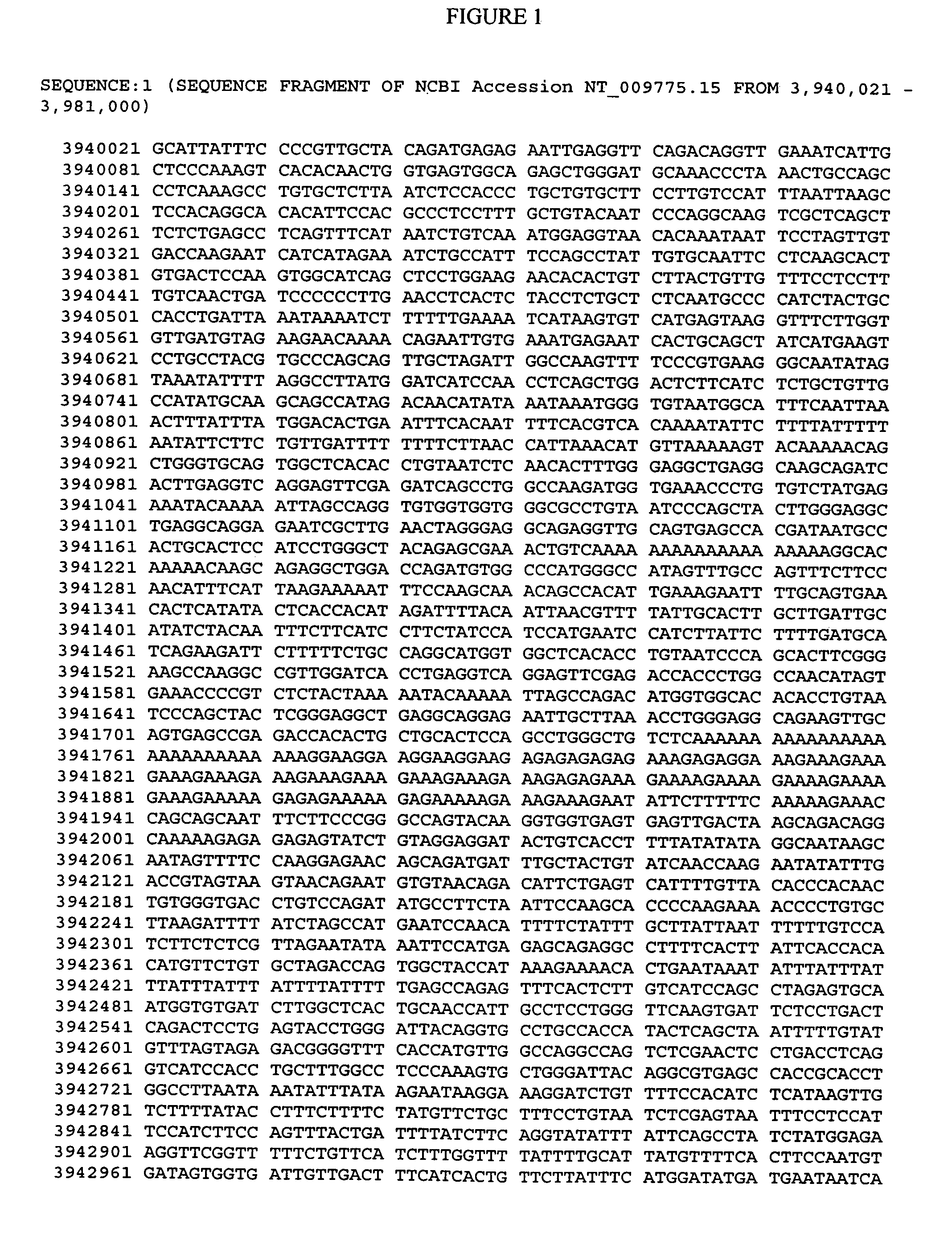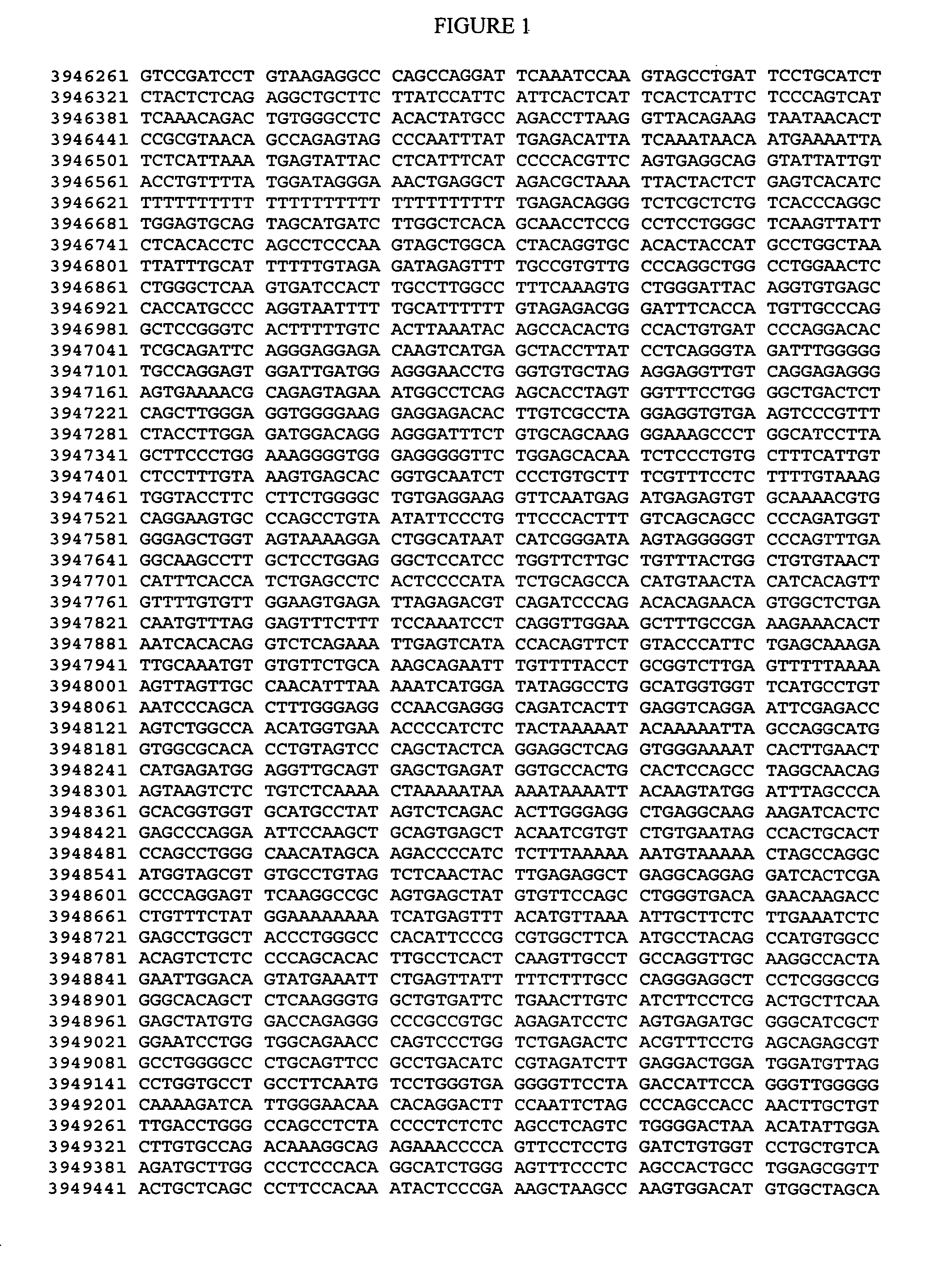Detection of mutations in a gene associated with resistance to viral infection, OAS2 and OAS3
a technology of oligoadenylate synthetase and gene, which is applied in the direction of biocide, drug composition, peptide/protein ingredients, etc., can solve the problems of inhibition of cellular protein synthesis and impairment of viral replication
- Summary
- Abstract
- Description
- Claims
- Application Information
AI Technical Summary
Benefits of technology
Problems solved by technology
Method used
Image
Examples
embodiments
[0488] OAS Protein Active Pharmaceutical Ingredient (API) Expression and Fermentation
[0489] In an exemplary embodiment, an E. coli strain containing a lysogen of λDE3, and therefore carrying a chromosomal copy of the T7 RNA polymerase gene under the control of the lacUV5 promoter, is transformed with a bacterial expression vector containing an isopropyl beta-D-1-thiogalactopyranoside (IPTG)-inducible promoter encoding a nucleic acid sequence corresponding to one or more OAS proteins or polypeptides. Cultures are grown in Luria broth medium supplemented with 15 μg / mL kanamycin at 37° C. When the OD600 reaches >0.6, the temperature is reduced to 18° C. and the cells are induced with 0.5 mM IPTG for 17 hours. The above low temperature induction favors the expression of primarily full-length, soluble OAS proteins outside of inclusion bodies. The bacterial cells are then resuspended in buffer containing 50 mM NaH2PO4, pH 8, 300 mM NaCl, 20 mM imidazole, 10% glycerol, 0.1% NP40,2 mM DTT ...
example 1
Preparation and Preliminary Screening of Genoic DNA
[0542] This example relates to screening of DNA from two specific populations of patients, but is equally applicable to other patient groups in which repeated exposure to HCV is documented, wherein the exposure does not result in infection. The example also relates to screening patients who have been exposed to other flaviviruses as discussed above, wherein the exposure did not result in infection.
[0543] Here, two populations are studied: (1) a hemophiliac population, chosen with the criteria of moderate to severe hemophilia, and receipt of concentrated clotting factor before January, 1987; and (2) an intravenous drug user population, with a history of injection for over 10 years, and evidence of other risk behaviors such as sharing needles. The study involves exposed but HCV negative patients, and exposed and HCV positive patients.
[0544] High molecular weight DNA is extracted from the white blood cells from IV drug users, hemoph...
example 2
Mutation in an OAS Gene Associated with Resistance to HCV Infection
[0547] Using methods described in Example 1, a population of unrelated hemophiliac patients and intravenous drug users was studied, and the presence or absence of a mutation in OAS3 or OAS2 as disclosed in the mutations in FIGS. 4 and 5, respectively, was determined.
[0548] In a study of 24 cases and 62 controls in a Caucasian population, these mutations were found in the context of resistance to hepatitis C infection. There was a statistically significant correlation between resistance to HCV infection and presence of a mutation in OAS2 or OAS3.
PUM
| Property | Measurement | Unit |
|---|---|---|
| resistance | aaaaa | aaaaa |
Abstract
Description
Claims
Application Information
 Login to View More
Login to View More - R&D
- Intellectual Property
- Life Sciences
- Materials
- Tech Scout
- Unparalleled Data Quality
- Higher Quality Content
- 60% Fewer Hallucinations
Browse by: Latest US Patents, China's latest patents, Technical Efficacy Thesaurus, Application Domain, Technology Topic, Popular Technical Reports.
© 2025 PatSnap. All rights reserved.Legal|Privacy policy|Modern Slavery Act Transparency Statement|Sitemap|About US| Contact US: help@patsnap.com



